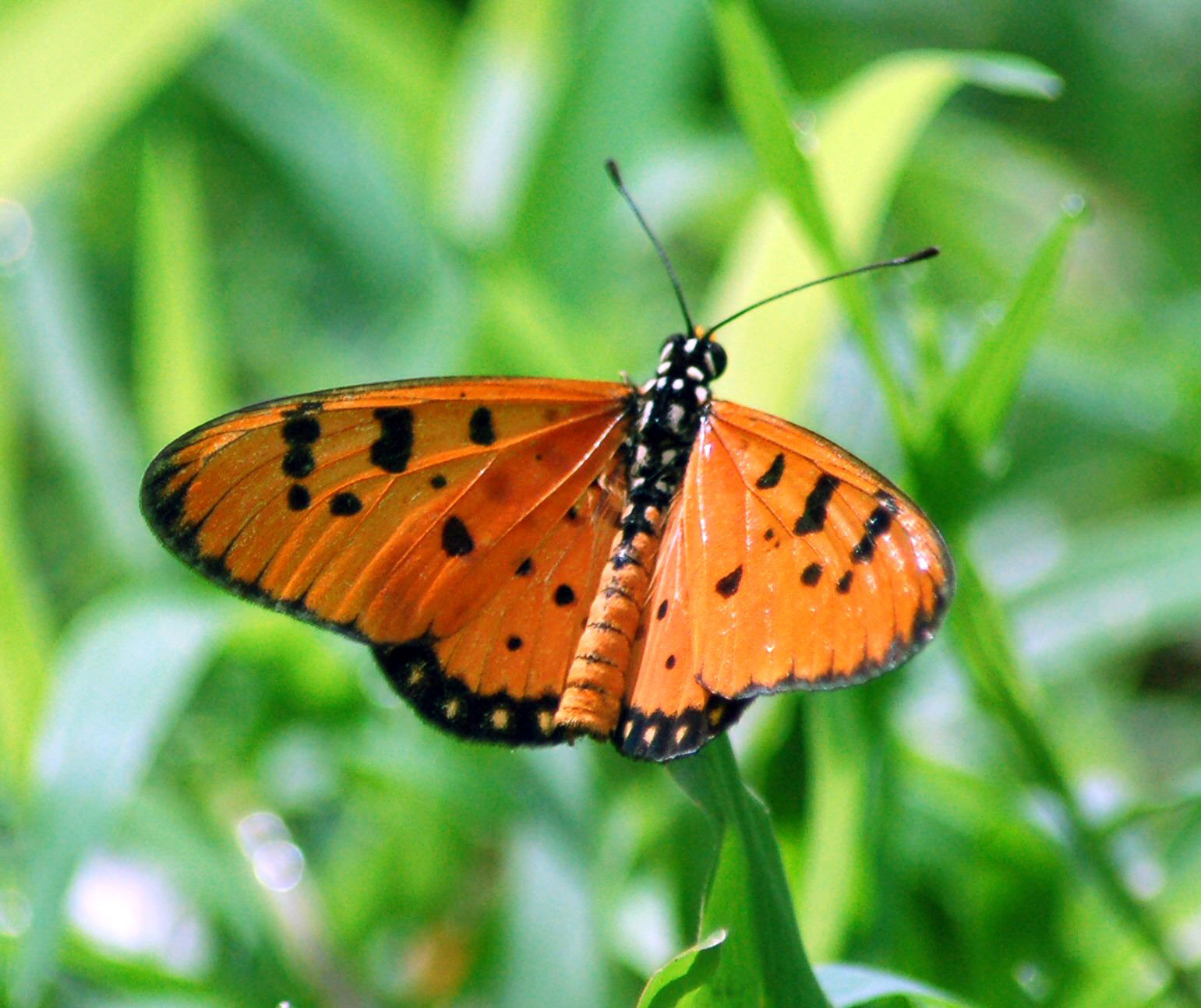- Acraea (genus)
Taxobox
name = "Acraea"

image_width = 240px
image_caption = TheTawny Coaster has been identified as the mysterious "Papilio terpsicore". Formerly known as "Acraea violae", it is now "A. terpsicore".
regnum =Animal ia
phylum =Arthropod a
classis =Insect a
ordo =Lepidoptera
familia =Nymphalidae
subfamilia =Heliconiinae
tribus =Acraeini
genus = "Acraea"
genus_authority = Fabricius, 1807
type_species = "Papilio horta "
type_species_authority = Linnaeus, 1764
subdivision_ranks =Species
subdivision =About 220, see text
synonyms ="Alacria" Henning, 1992
"Aphanopeltis" Mabille, 1887
"Auracraea" Henning, 1993
"Aurora" Henning, 1992 ("non" Ragonot 1887: preoccupied)
"Gnesia" Doubleday, 1848
"Hyalites" Doubleday, 1848
"Pareba" Doubleday, 1848
"Phanopeltis" Mabille, 1887
"Planema" Doubleday, 1848
"Rubraea" Henning, 1992
"Solenites" Mabille, 1887
"Stephenia" Henning, 1992
"Telchinia" Hübner, 1819
See references in Haaramo (2007)]"Acraea" is a
genus ofbrush-footed butterflies (family Nymphalidae) of thesubfamily Heliconiinae . It seems to be highlyparaphyletic and has long been used as a "wastebin taxon " to unite about 220species of anatomically conservativeAcraeini . Mostspecies assembled here are restricted to theAfrica n region, but some are found inIndia ,Southeast Asia , andAustralia .Silva-Brandão "et al." (2008)]The foodplants of their
caterpillar s are usuallyUrticaceae or, like in most Heliconiinae,Passifloraceae . Some feed on other plants, such asFabaceae , "Flacourtiaceae " orViolaceae . Their preferred species containcyanogenic glycoside s, which make the larvae and adults poisonous topredator s. Theaposematic coloration of the adults announces this, and some species are mimicked by less noxious butterflies. At least some "Acraea" are able to produce the toxins themselves.ystematics and taxonomy
That all these
species were properly placed in "Acraea" has never been generally accepted. In 1807,Johan Christian Fabricius established the genus for theGarden Acraea , described as "Papilio horta" byCarl Linnaeus in 1764, and its relatives. By and by, an increasing number of species were placed here. As early as 1848, and again in 1887 and the early 1990s, it was attempted to divide the genus into groups of closest relatives, as it was suspected that some "Acrena" might actually be closer to other genera in the tribeAcraeini .Pitkin & Jenkins (2004), Silva-Brandão "et al." (2008). See also references in Haaramo (2007)]With increasing availability of
DNA sequence data, it is confirmed that "Acraea" as loosely defined does not constitute amonophyletic group. Even before the attepts to split up "Acraena" in earnest had begun,Jacob Hübner in 1819 suggested to separate species around "Acraena serena " as "Telchinia". This name has been applied to a generallyAfrica n group whose members usually feed onUrticaceae , and they had already been noted to bear some uncanny resemblances to the American "Actinote " inanatomical details. Indeed, they seem to be closer relatives of these than of the other butterflies placed in "Acrena", which usually feed onPassifloraceae and are at least in part quite close relatives of the African genus "Bematistes ". Those closest to that genus might warrant separation as "Rubraea" or "Stephenia".But while several informal "species groups" have been established, it is not clear which of these are
monophyletic and how to split the apparently stillparaphyletic genus further. The placement of the Garden Acraena – thetype species –, and hence which of the any further subdivisions will get to bear the name "Acraena", remains unresolved. As it is traditionally included in the former "A. terpsicore" group (now "A. serena" group) and its caterpillars, while polyphagous, do not feed on Urticaceae, it may be that the separation of "Telchinia" is unwarranted and other proposed genera might be resurrected instead.There was one major misidentification which still causes confusion today. "Acraea terpsicore", described as "Papilio terpsicore" by Linnaeus in 1758, was held to be the
senior synonym of "A. serena", described by Fabricius as "Papilio serena" in 1775. Hence, the former name was commonly used for that African species. But as it turned out, Linnaeus had actually described anIndia n species – the well-knownTawny Coaster . Fabricius in 1793 believed it was new to science and described it again, as "Papilio violae". Consequently it had been long known as "A. violae". It was also recognized that Fabricius' little-studied "P. serena" was none other than theOrange Acraea . For this, the name "A. eponina", from the "Papilio eponina" established in the 1780 issue ofPieter Cramer 's "De uitlandsche Kapellen", had been used all the time.Silva-Brandão "et al." (2008); see also references in Haaramo (2007)]pecies
Since the proposed
phylogenetic sequence of the "species groups" is almost certainly incorrect for a large part, the groups are simply listed alphabetically."Acraea acrita" species group
* "Acraea acrita "
* "Acraea chaeribula "
* "Acraea eltringhamiana "
* "Acraea guluensis "
* "Acraea lualabae "
* "Acraea manca "
* "Acraea pudorina "
* "Acraea utangulensis ""Acraea andromacha" species group (close to part of "A. serena" group?)
* "Acraea andromacha " "Acraea anemosa" species group
* "Acraea anemosa "
* "Acraea pseudolycia "
* "Acraea turna ""Acraea aureola" species group
* "Acraea aureola "
"Acraea bonasia" species group (close to "A. oberthuri" and "A. rahira" groups?
* "
* "
* "
* "
* "
* "
* "
* "
* "
* "
* "
* "
* "
* "
* "
* "
* "
